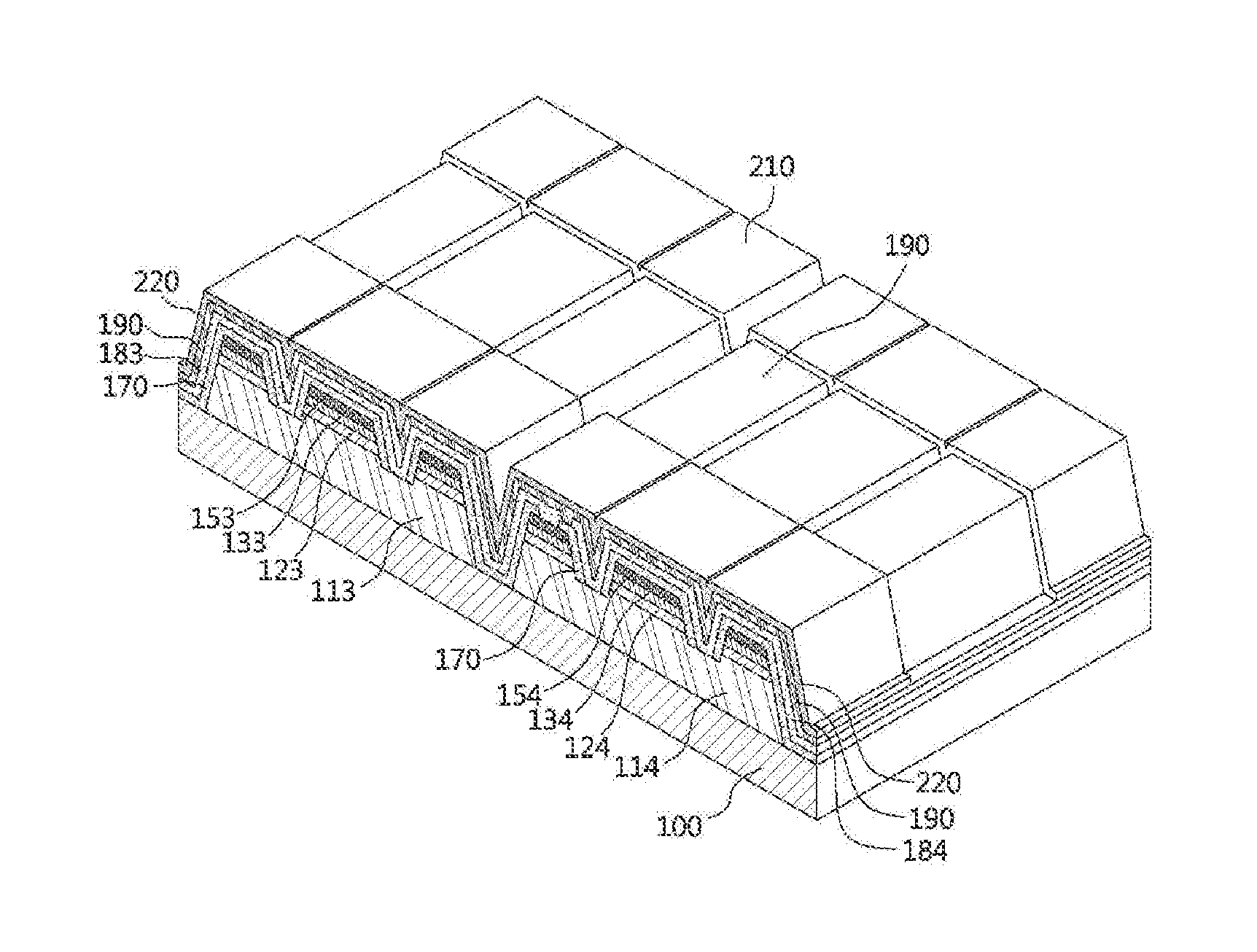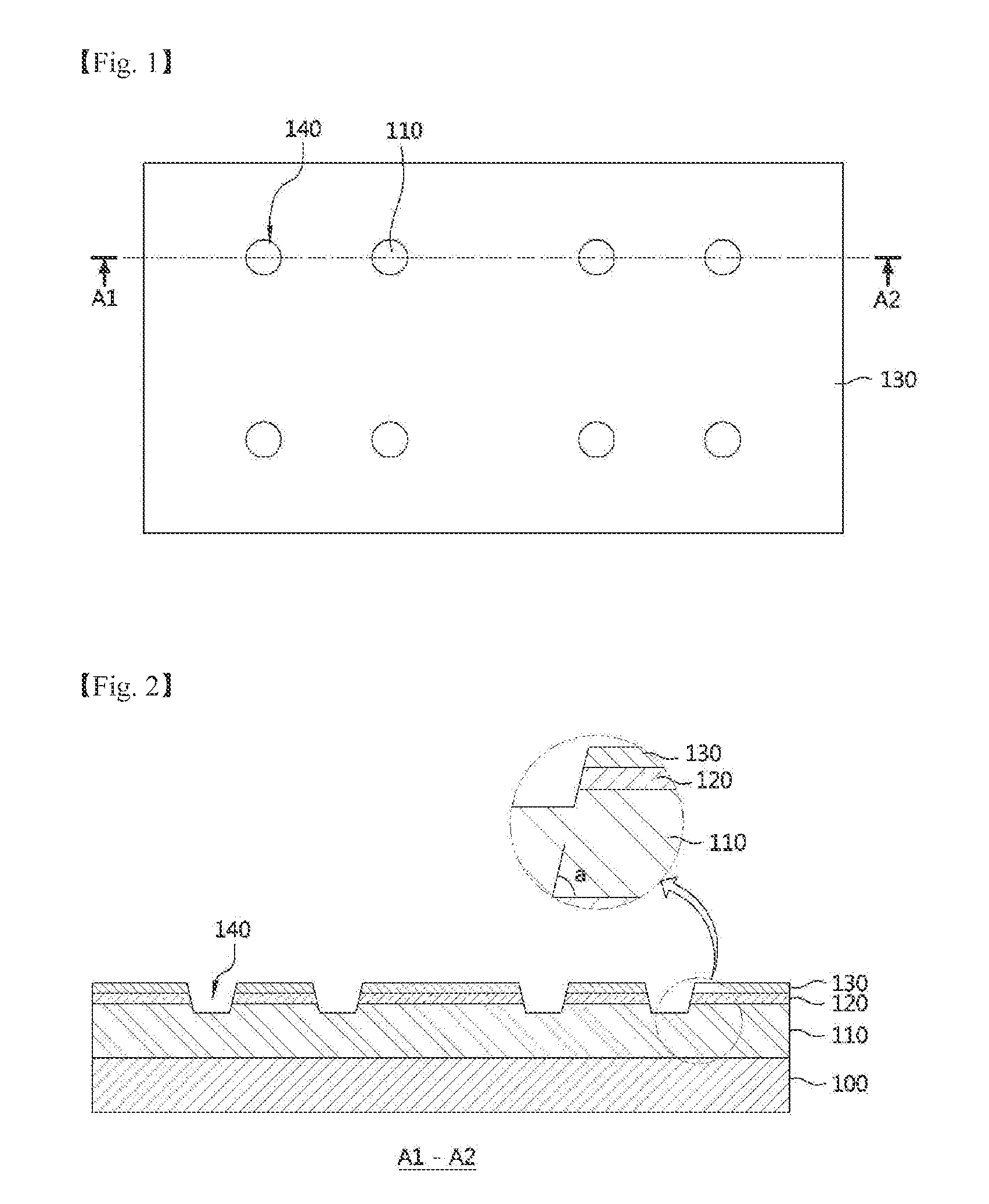Wafer level light-emitting diode array
a technology of light-emitting diodes and arrays, which is applied in the direction of basic electric elements, electrical equipment, and semiconductor devices, can solve the problems of increasing the fabrication cost of an illuminating apparatus including the light-emitting diodes, the inability to use the light-emitting diodes directly under the common ac power source, and the loss of light, so as to improve the current distribution performance, improve reliability, and reduce the loss of light
- Summary
- Abstract
- Description
- Claims
- Application Information
AI Technical Summary
Benefits of technology
Problems solved by technology
Method used
Image
Examples
Embodiment Construction
[0058]Hereinafter, preferred embodiments of the present invention will be described in greater detail with reference to the accompanying drawings, in order to more fully describe the present invention. However, the present invention is not limited to the following embodiments but may be implemented in other forms.
[0059]In these embodiments, it will be understood that the term “first”, “second”, “third” or the like does not impose any limitation on components but are only used to distinguish the components.
[0060]FIGS. 1 and 2 are plan and sectional views showing that a plurality of via holes are formed in a laminated structure according to an embodiment of the present invention.
[0061]In particular, FIG. 2 is a sectional view taken along line A1-A2 in the plan view of FIG. 1.
[0062]Referring to FIGS. 1 and 2, a first semiconductor layer 110, an active layer 120 and a second semiconductor layer 130 are formed on a substrate 100, and via holes 140 are formed to allow a surface of the sem...
PUM
 Login to View More
Login to View More Abstract
Description
Claims
Application Information
 Login to View More
Login to View More - R&D
- Intellectual Property
- Life Sciences
- Materials
- Tech Scout
- Unparalleled Data Quality
- Higher Quality Content
- 60% Fewer Hallucinations
Browse by: Latest US Patents, China's latest patents, Technical Efficacy Thesaurus, Application Domain, Technology Topic, Popular Technical Reports.
© 2025 PatSnap. All rights reserved.Legal|Privacy policy|Modern Slavery Act Transparency Statement|Sitemap|About US| Contact US: help@patsnap.com



